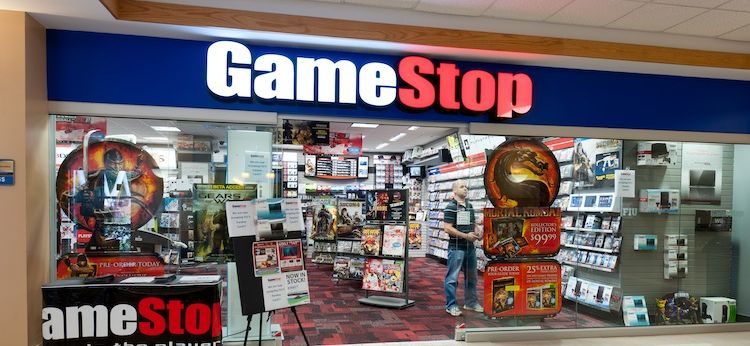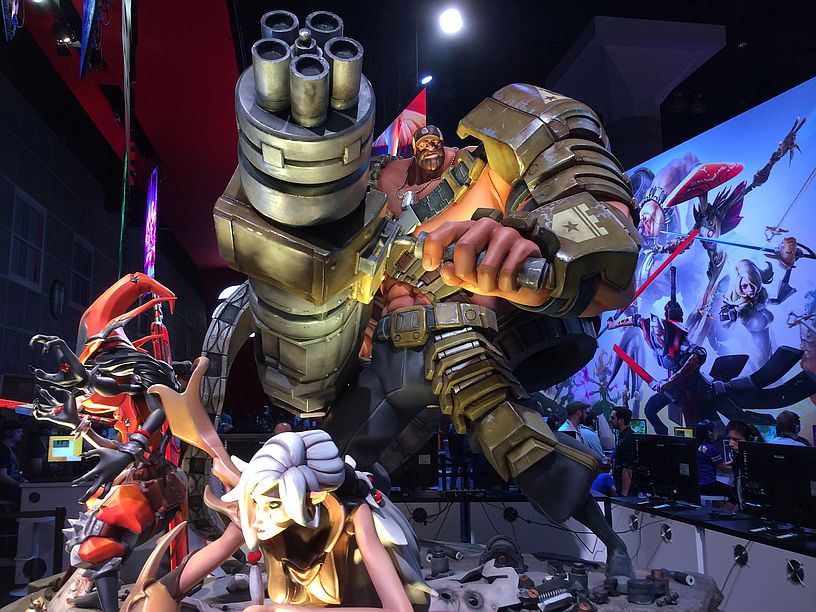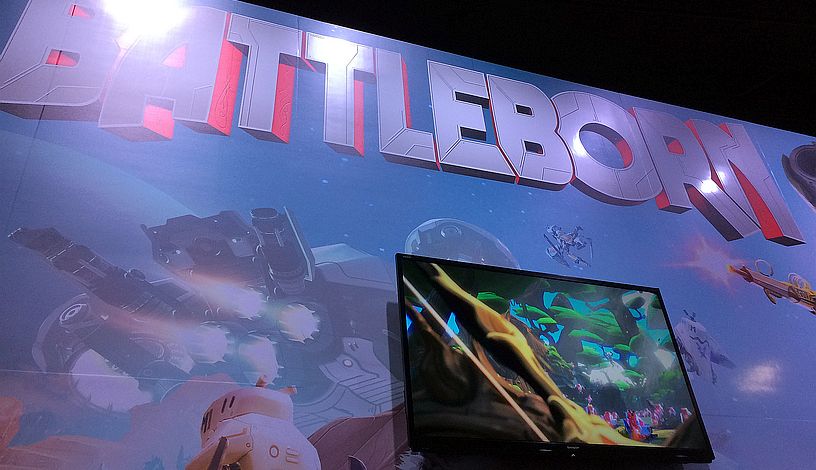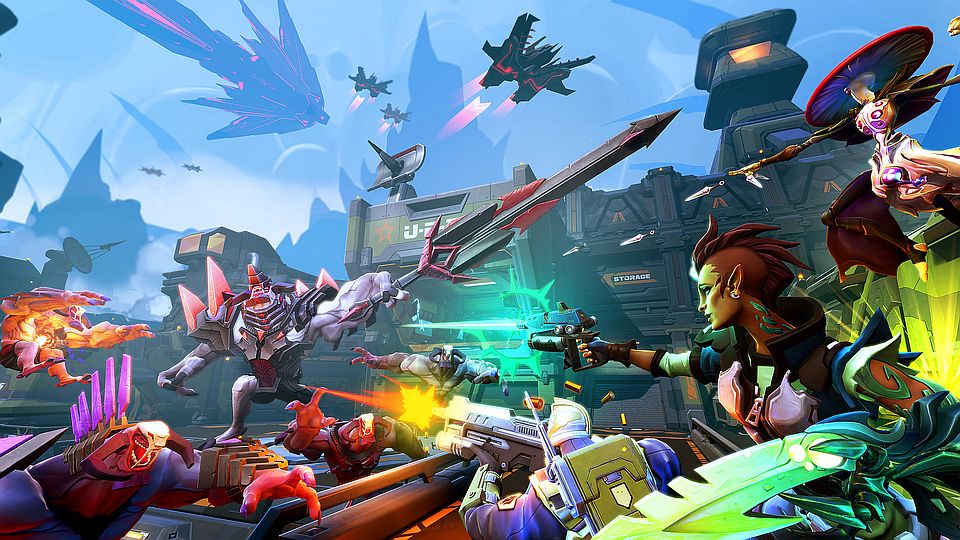One of the main reasons behind the massive effort put into the E3 show by publishers and manufacturers is to boost excitement for fall product releases, both among consumers and among retailers. The largest market share in the USA for retail video games sales belongs to GameStop, so it’s not surprising that GameStop executives were at E3 holding meetings and getting their impressions on what will be important for the crucial holiday selling season.
While it would be easier if new product releases were spaced out evenly during the calendar, the reality is that entertainment software sales hit their highest point during the fourth quarter, as do game console and accessory sales. Marketers are doing their best to stand out in the crowded holiday season, and efforts are retail stores are a critical part of this battle. Bob Puzon, senior vice president for merchandising for GameStop, sat down with [a]listdaily to talk about the holiday market for games and how GameStop works with marketers.
There are plenty of major releases coming out this fall. Is it a difficult juggling act to deal with the demands of so many publishers for so many titles?
It is the chess game of where do we fit all these games and all these IPs. The real truth is for us to try to continue to be a specialty retailer, we want to make sure everybody has some kind of exposure in our stores. We’re trying to figure out now, will you have marketing exposure, will we have associates that will be standing behind and educating them on some of these smaller niche titles that we know absolutely make a difference at GameStop The rest is trying to figure out if you have an IP that has franchise following, does it always need the most exposure in the store because someone’s going to come in and ask for it?
That’s one of the things publishers ask — can I get four facings, can I get eight facings — the answer is we’d love to give it to you, but the holiday is going to be so packed we’d like to get all these things out there. What we won’t do is hide some of the videogames. We’re going to make sure that some of these have different exposure than they’ve ever had. We’re going to have “The Best Games of E3” that we’ll be starting next week. We typically do that, that’s one where what we know about we’ve already got planned, locked and loaded. With some of the surprises, the good news is back at home we have some of our GameStop Online community sending updates out to the stores.
It’s a very crowded market for the fall, with many big releases. How does GameStop deal with this huge array of new titles coming to the stores?
One think I think we’ve done well is to stay true to our core as a specialty retailer. We try to carry every single title that there is out there. If an indie’s going to create a disc, we want to make sure that disc has exposure. We have guard rails for each one of these guys, too. Some of the biggest of the big come out in November, but I’ll focus on November when the time is right. What I’ve got to do is get through these titles that truly make sense for us right now. We’re going to have some wonderful summer launches, we’re going to get through our typical Madden and FIFA launches, and I want to make sure that our folks are educated and they can talk about these games to the consumers.
Right now we’re trying to feed them through the fire hose, and we want them to do is understand each one of the games as they release. It’s the Jedi mind trick of telling these guys let’s talk about what’s happening next week — let’s talk about Batman, the season pass that’s attached with that and the content that’s there, and then what do you roll over as they come in. ‘What’s your next reservation ‘ That’s what we start talking about the day that they’re in our stores. These guys love to come in for our launch events. They’re there at 6 p.m., what’s our opportunity to run through GSTV, our GameStop Television, and what’s the opportunity for our associates to talk about the next title they should reserve.

One thing we’ve heard complaints about is the vast array of retailer-specific content, where consumers have been unable to get all the different items they wanted for a game because some things were only available at one retailer. People were even putting together spreadsheets to try and sort through what content they could get at which retailer. Have you been getting this pushback, and how are you dealing with it?
That’s a great question, because that was a tipping point for us and it was a learning experience. We were also on the receiving end, where I’d go ‘well, Wal-Mart’s getting X, Best Buy’s getting X, Target’s getting X… and this is what I’m getting.’ We’re just confusing the consumer. In most cases the publisher has helped narrow this for us. We may get an exclusive character, an exclusive vehicle or car. But if you lay them all out most of them have become more consistent.
What’s always happened, when I was the guy that won it was nice to be on the winning side. But then I was the guy that said ‘Geez, I asked for that but I’m looking at my competitor who may have something more valuable.’ The good news is we’re taking a stronger approach with the developer and the publisher to say ‘Help guide us.” Because what we don’t want to do is take a game and upset the consumer. We hear the same thing: ‘You know what you’ve done to me Because I have to get the DLC from three other places to truly make this a game.’ They’ve helped narrow that for us this year.
The new consoles have been doing well in terms of sales so far, but what do you think we’re going to see for hardware sales this holiday season?
I think we still have a lot of upside with the installed base of folks that are playing Xbox 360 and PS3. It’s going to be up to the retailer to truly educate them, number one, and number two, they’re playing in our wheelhouse with the trade options and opportunities that we’re going to have to offer throughout the summer and holiday. We think that’s going to be another tidal wave of people that are jumping to the next gen. We’re going to let them make the decision on Xbox One or PS4, we’re going to offer trade opportunities for both. We think that we’ll have some very compelling values to take some of that old product that you have or some of the old hardware, and trade it in to upgrade.
When you move beyond the hardcore gamers to the family purchases of consoles, there’s going to be a broad array of choices this fall. Families may only budget for one piece of hardware, if any, for the holidays, and they will be confronted with Android TV consoles, Steam Machines, last-gen consoles, and tablets, as well as the latest consoles, with a wide variety of price points. Isn’t this a really difficult choice facing consumers this fall?
I agree. To your point, the conversation we continue to have with Microsoft, Sony, and Nintendo, is the broad consumer becomes a very large part of our shopping base for the holiday. How do you make sure that you convey value People are going to be loyal to their pockets. How do you continue to plus up The good thing is our associates ask what you’re currently playing and what your future needs are, and in most cases we can help qualify a customer on what will work best for them. I’ll tell you what, Microsoft and Sony have been very competitive, I’m sure you’ve seen the battles back and forth.
I think this holiday is truly going to be an extremely strong holiday for the hardware, because a lot of folks sat back to see where the price is going to land and then what makes more sense for them. I think there are still folks sitting back going ‘Who’s going to win this console cycle, and where should I make my bets ‘



 Battleborn statues at E3
Battleborn statues at E3 Battleborn on display
Battleborn on display
